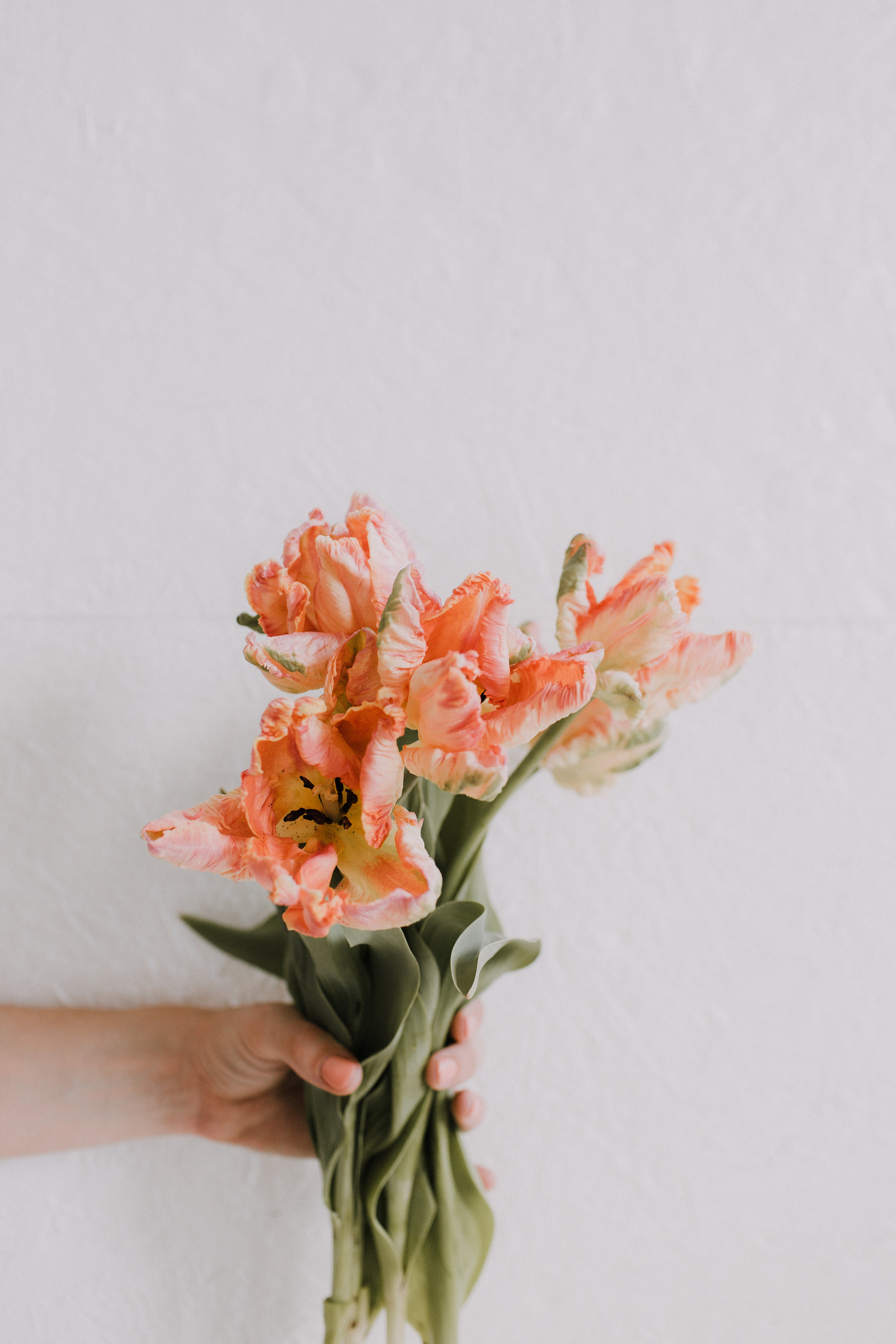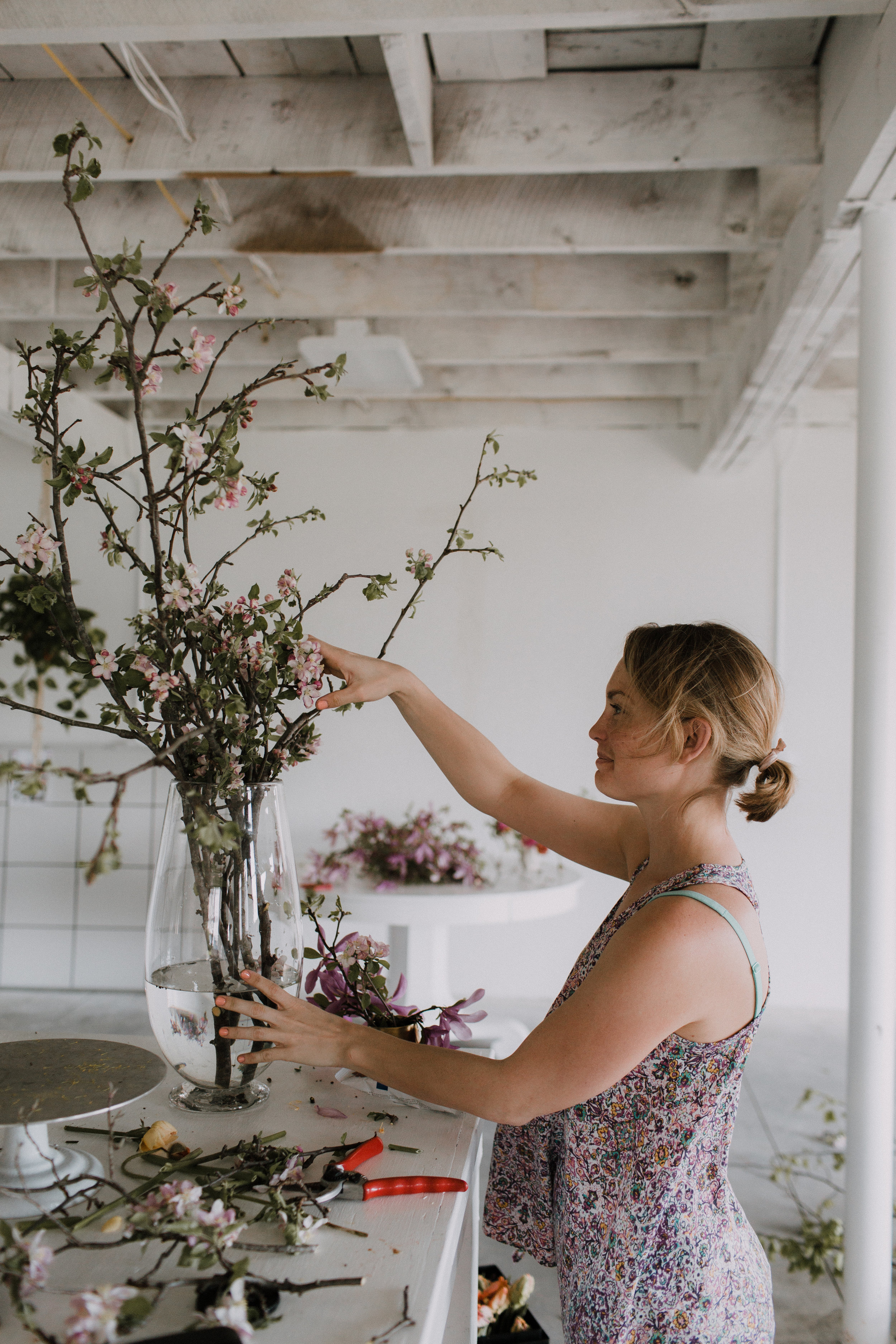Botanical Name: Cornus
Blooms Locally: Mid-Late April
"After all, I don’t see why I am always asking for private, individual, selfish miracles when every year there are miracles like white dogwood." – Anne Morrow Lindbergh
Since we are situated on a tree farm in Montgomery County, we have the luxury of unabated access to dogwood branches when they bloom in the spring. We are very careful to harvest the branches sustainably so that we don't traumatize the tree. Here is how to properly cut tree branches:
- Make a small cut, several inches up from the "branch collar" on the underside of the branch approximately ¼ of the way through. "This prevents bark from tearing off along the underside of the branch during removal of the heavier outer portion."
- Then make a cut all of the way through the branch from the top down, removing the majority of the branch.
- Cut the remaining branch stub away from the main stem, just outside of the branch collar. Do not cut into the branch collar tissue (pictured below).
Source: http://www.extension.iastate.edu/smallfarms/proper-techniques-prune-trees-and-shrubs
We used dogwood blossoms in just about every wedding this spring. The delicate, 4 pronged flowers add beautiful lines to any floral arrangement large or small. We used long, arching pink branches for statement pieces in one of our April weddings and complimented the large arrangements by featuring the flowers in satellite arrangements as well. We are already missing these gorgeous, fragrant blooms as blossoming branch season gives way to a summer full of flowers!
Photos by Becca Olcott

























